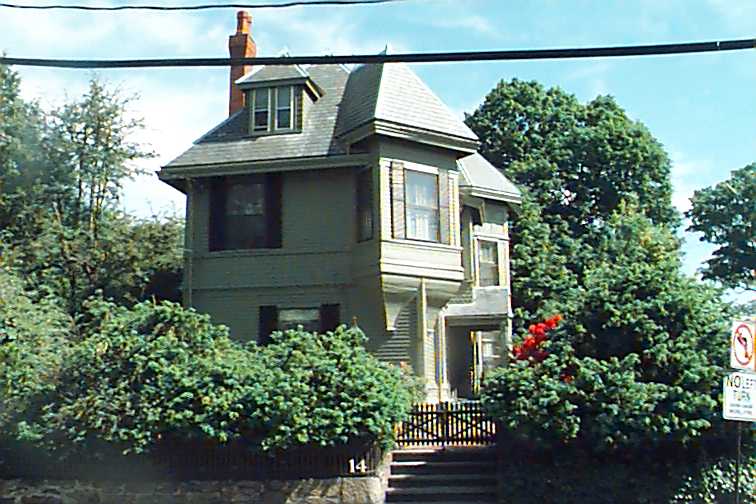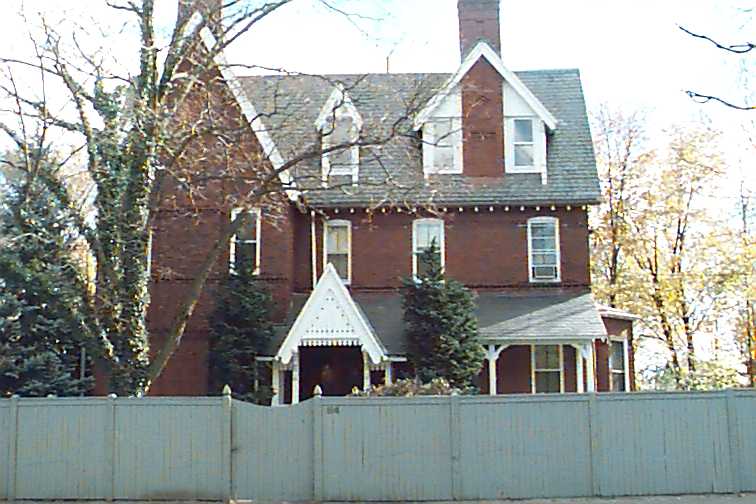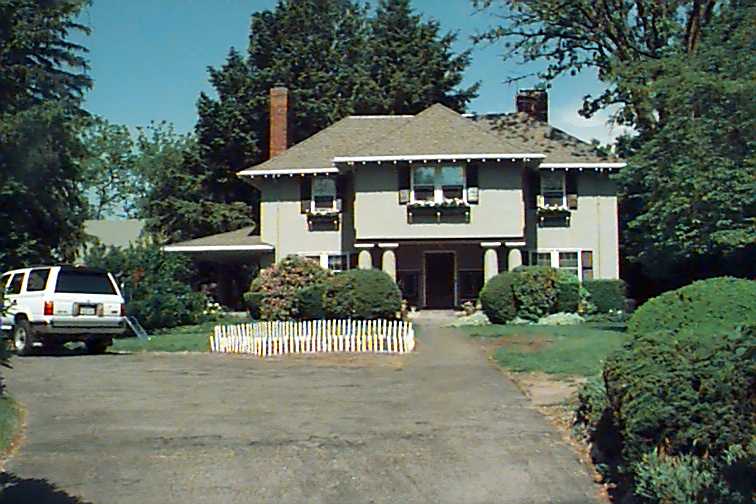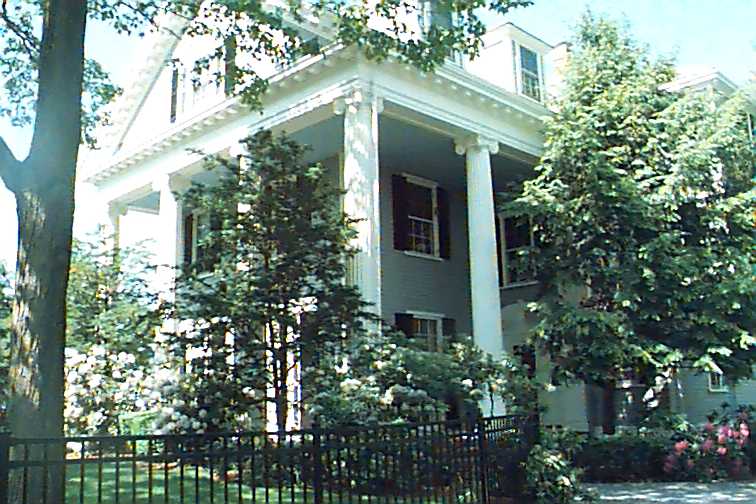| < previous | map | next > |
24

Sweedenborgian Church
25
One of the founding members of the Swedenborgian Church, James Edgerly, built 39 Irving Street in 1875. The brick of the first floor extends upward to a prominent ornamented chimney while the overhanging second floor has a wall surface of vertical boarding. Accented with Stick style framing, the structure reflects a picturesque Queen Anne quality with its tower, peaked dormers, and mixture of materials. Mr. Augustine Shurtleff was another generous founder of the Swedenborgian Church.
26
Beyond the row of evergreens, one of his houses remains at 14 Allerton Street. Built circa 1882, this is a good example of Queen Anne style architecture. The complexity of its exterior massing with towers, peaked slate roof, tall chimneys and dormer windows, is typical of many domestic buildings of the era and exhibits the restless activity of Victorian design. Notice the four patterns of wood surfacing–clapboards, scalloped and hexagonal shingles, and paneling–which further break up an already complex facade.
The very name, Queen Anne, suggests the eclecticism of its originators. It was coined in England to describe buildings that were supposedly inspired by the transitional architecture of the pre-Georgian period when classical ornament was grafted onto buildings of basic medieval form. The Queen Anne style plays on contrasting materials: first floors are often molded brick or stone; upper floors are of stucco, clapboard or decorative shingles. Roofs are irregular, often with turrets or second-story projections, and gable ends are ornamented with half-timbering or stylized relief decoration. Banks of casement windows are typical, and upper panes are frequently outlined by stained-glass squares. Just as verandas and balconies opened houses to the outdoors, interior plans allowed for large, open spaces.
27
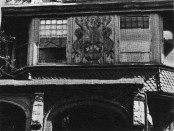
Mastic Design
(2) Charles K. Bolton, “Memoirs of Edward Stanwood,” Proceedings of the Massachusetts Historical Society (Boston: Massachusetts Historical Society, 1923), p. 10.
28

Mastic Design
29
On the other side of the Runkle home stands a brick and shingle house, 92 High Street. Built in the late 1870s for Thatcher Loring, the treasurer of National Dock and Warehouse Co. in Boston, the most striking feature of this house is its paneled oak entranceway with small paned windows and bull’s-eye motif.
30
Next door, 100 High Street, was built for Cadwallader Curry, a Brookline Savings Bank Commissioner. Notice the half-hip dormer, the ornamental slate roof, and the clapboards overlaid with Stick style boarding.
31
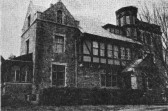
99 High Street
32
At 127 High Street is a stucco hipped-roof house designed in 1909 by Edwin Lewis, Jr. for Prescott Hall. Next door at 135 High Street is a large Greek Revival house built for Prescott Hall’s father between 1871-74, the large portico being a later addition. A practicing lawyer, Prescott Hall was also an author on economics, eugenics, and immigration. His conservative policies regarding immigration restrictions can be contrasted with the pro-abolitionist activities of his parents’ neighbors who had lived across the street. According to local legend, the house at 138 High Street was another station on the underground railway.
| < previous | map | next > |


